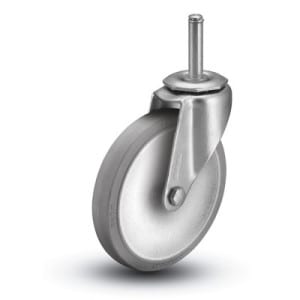 You can give yourself a firm pat on the back if your distribution or production facility is working at peak capacity.
You can give yourself a firm pat on the back if your distribution or production facility is working at peak capacity.
You can stop reading now!
However, very, very few companies are able to confidently claim that their production floor is working absolutely flawlessly with absolutely no room for improvement. No matter how well you feel your systems are performing, there might just be a few ways you can maximize their efficiency. It’s something you shouldn’t ignore. After all, efficiency has an effect on your profits, both positive and negative.
How Do You Measure Efficiency?
The first question you might just be asking yourself is how do you know that your production or distribution floor is running with maximum efficiency? Simple, just measure it! It’s the best way of gaining an understanding of the actual ebbs and flows of your production process.
The collection of data is incredibly important. You may be able to gain a ‘gut feeling’ of how your process performs, but without data to back it up, you might as well just be guessing. Also by undertaking an accurate data collection, you may uncover ways in which your processes could be improved that simply had not occurred to you.
Measure the Time
Evaluate how long it takes for items to get from one section of your warehouse or production facility to another, and don’t forget to measure the entire journey. Measure how the size and weight of objects has an effect. Measure the time your employees spend performing the necessary duties during the process.
If you have forklifts, then measure how much time each employee spends in operational duties, and how much time each forklift spends in a charging station. Record the maintenance costs associated with each piece of equipment. Don’t forget the human factor too. Measure the cost-effectiveness of your employees by determining how much time they spend performing tasks.
Analyze Manufacturing Processes to Spot Inefficiencies
Once you are armed with all this data, you need to spend some time analyzing it. You do not have to get the statistical experts in to crunch the numbers in infinite ways. The idea of the data is to give you an idea of how your process works, and to identify any areas that could be improved. You might find that you don’t have enough forklift trucks for example. You could also find that a bottleneck in the process is being created at one point because your employees find it difficult to manhandle items at this stage. A bottleneck is something to be avoided at all costs as it affects all other processes down the chain and stops other processes from running as efficiently as they should.
Once you have an idea of what’s ‘going wrong’ in your process, you will need to come up with some ideas of how you’re going to make improvements, and one of the best ways you can make improvements is to invest in material-handling equipment.
Boost Efficiency in Your Manufacturing Facility
Many of the problems experienced in a warehouse or production facility stem from manual handling by employees. When moving items from one point in the process to another, on most occasions the less human interaction in the process there is, the better. This doesn’t mean getting rid of all your employees and replacing them with robots, of course! It means that you can help your employees maximize their efficiency by giving them a helping hand.
Conveyor Systems
Conveyor systems are great, but they do not have to be expensive. A conveyor can simply be an assembly of rollers. Items can be off-loaded from a delivery truck onto the conveyor and then pushed along until they reach their destination. This saves time in placing each item individually on a suitable transportation device and then transporting them in batches. For a little added convenience, you could always invest in a motorized conveyor system. The initial cost will be greater, but such an investment should pay for itself over the long term.
Improve on Your Existing Material-Handling Equipment
Even if you’ve already invested in material-handling equipment, you may discover the investments you’ve made have not been sufficient. For example, your employees may have a fleet of pallet trucks at their disposal. However, by analysis, you may find employee fatigue is still an issue. Pallet trucks still require human intervention, and as the day goes on, your employees may tire and efficiency can suffer as a result. A production process that’s running smoothly in the morning may grind to a halt by mid-afternoon.
Therefore, you may wish to consider powered pallet trucks. You do not have to go all in and invest in forklifts, many types of pallet trucks come with powered options. Your employees simply switch on the power when needed, and then guide the trucks to where they are required. Again, there is an initial expense to consider, and on-going maintenance costs, but powered-pallet trucks can reduce employee fatigue and in turn, make your processes much more efficient.
Turn to Douglas Equipment for Additional Efficiency Improvement Options
It can be bewildering to explore and understand your options when it comes to maximizing your efficiency using material-handling equipment. To learn more about how you can increase efficiency within your facility, feel free to reach out to our team at Douglas Equipment. We have decades of experience when it comes to all aspects of material-handling equipment solutions, from simple conveyor systems to forklifts.
To speak to a member of our team, just pick up the phone and call 1-800-451-0030, or contact us through our contact form today.




